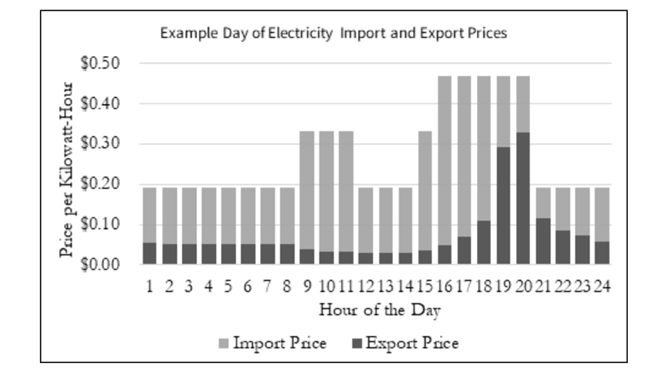Customers of PG&E, SDG&E, and SCE will see a significant shift in their net metering services. New guidance on the most recent NEM 3.0 proposal has been made available by the CPUC. According to the updates, the modifications appear to affect these clients significantly.
Let's dive in to explore more!
What is Net Metering?
Net metering is an electric billing mechanism that allows you to use the power grid to store surplus energy generated by your solar panel installation. Net metering credits you for electricity produced by the solar panels that you do not utilize. When your panels aren't making enough energy on a gloomy or rainy day, the grid will feed your house electricity using the credits you've accumulated over time.
Why is Net Metering Important?
Net metering is essential as it allows solar consumers to send excess energy back to the grid in return for a credit on their electricity bill. This credit carries over from month to month, aiding in reducing energy expenses and assuring payment for energy produced.
Learn more about Net Metering Policies.
NEM 3.0 California- Key Takeaways:
Here's how people can leverage the maximum benefits from the recent update.
In Net Metering 3.0, the CPUC suggests a new iteration of the net energy metering regulation. For potential solar consumers, there are five key takeaways from the report, which was released on November 10, 2022.
- There are no additional levies or fees, dubbed "solar taxes."
- Under NEM 3.0, combining solar with battery storage will be more advantageous.
- It includes a significant fall in the net metering value of solar power.
- Solar owners who have been allowed back into NEM 2.0 will be able to install battery storage later and continue to use NEM 2.0.
- Solar clients that apply for interconnection before April 14, 2023, can be added back into NEM 2.0 for 20 years.
Lower solar export rates
Solar owners would be reimbursed for any surplus power generated and sent into the grid. Every kWh exported from the grid compensates for a kWh imported (import). Export pricing under the proposed NEM 3.0 would base on the "Avoided Cost Calculator," It would fluctuate by the hour depending on Time of Use charges.

According to the California Solar and Storage Association, net billing under NEM 3.0 would continue to be paid yearly rather than monthly, as recommended by utilities. The yearly cycle is seen to be more beneficial to solar owners. "The solar industry and proponents of clean energy are currently analyzing the CPUC's recommended judgment," the group stated.
A Push For Pairing Solar And Battery
The combination of solar and battery storage is a prominent subject in the NEM 3.0 concept. The problem in California isn't creating solar energy; it's storing and utilizing it because peak solar output does not coincide with peak energy usage. This is because energy consumption is peaking as solar power is going down for the night.
The Self Generation Incentive Program (SGIP), which gives battery storage incentives to SCE, PG&E, SDG&E, and SoCalGas customers, receives $900 million in new financing in the NEM 3.0 plan. Batteries can help households store solar power generated throughout the day and feed it back into the grid in the evening when export prices peak.
During peak demand hours in September, the planned export rates can reach 3.32 cents per kWh. According to preliminary evaluations of the NEM 3.0 concept, the return on investment for solar with battery storage will be nearly equivalent to the return on investment for solar alone. With that in mind, combining solar and batteries becomes more appealing because you receive the same ROI.
A Look Back at NEM 2.0
Energy and Environmental Economics, Itron, and Verdant Associates published the net metering 2.0 Lookback Study. The study's primary purpose was to assess the impact of NEM2.0. The review also included a cost of service analysis, determining the utility's marginal cost of serving a NEM customer.
The cost-effectiveness analysis tests that assess the costs and benefits of NEM 2.0 are as follows:
- Participant cost test
- Total resource cost test
- Ratepayer impact measure test
- Program administrator examination.
According to Net metering 2.0, fees were levied on both the energy used by the customer and the energy produced and returned to the grid to fund public initiatives like energy efficiency rebates and low-income bill assistance.
Customers of NEM are given credit at full retail pricing. These costs include what the client would have incurred had they chosen to use their solar system instead of the grid. Then, nevertheless, it deducts these program fees for public purposes.
How To Prepare for the NEM 3.0?
You could lock in the benefits of net metering 2.0 for 20 years by going solar today. According to experts, the CPUC will likely continue with the older systems and honor the initial agreements. With the adoption of California's NEM 3.0, these advantages are expected to vanish. NEM 2.0 offers consumers some of the most substantial nationwide net metering benefits.
Energy experts at YellowLite recommend including a backup storage system in your solar project if you intend to install solar panels in your house or place of business. With a backup battery system, you can become more independent from electricity providers and their net metering laws. With additional batteries, you can store extra electricity as you see fit rather than giving it back to the grid.
When and how long will Net Metering 3.0 / NEM3.0 be implemented?
The CPUC anticipates that the entire procedure, beginning with the prehearing conference in November 2020, will last around 15 months. It will start in the spring of 2021 before the major procedures, in which parties will submit suggestions for the replacement tariff.
Final Notes (How NEM 3.0 Will Effect Solar Consumers)
- The export rate for household solar power would decrease by around 7.5 percent under NEM 3.0.
- Lower export prices would lengthen the solar owners' payback time. This significantly raises the value of combining solar power and battery storage.
- The return on investment for solar plus batteries is comparable under the proposed tariff structure for solar solo.
That's all for now; stay updated for more solar news and updates. YellowLite is here to help you if you need assistance installing solar installations for residential and commercial buildings!



